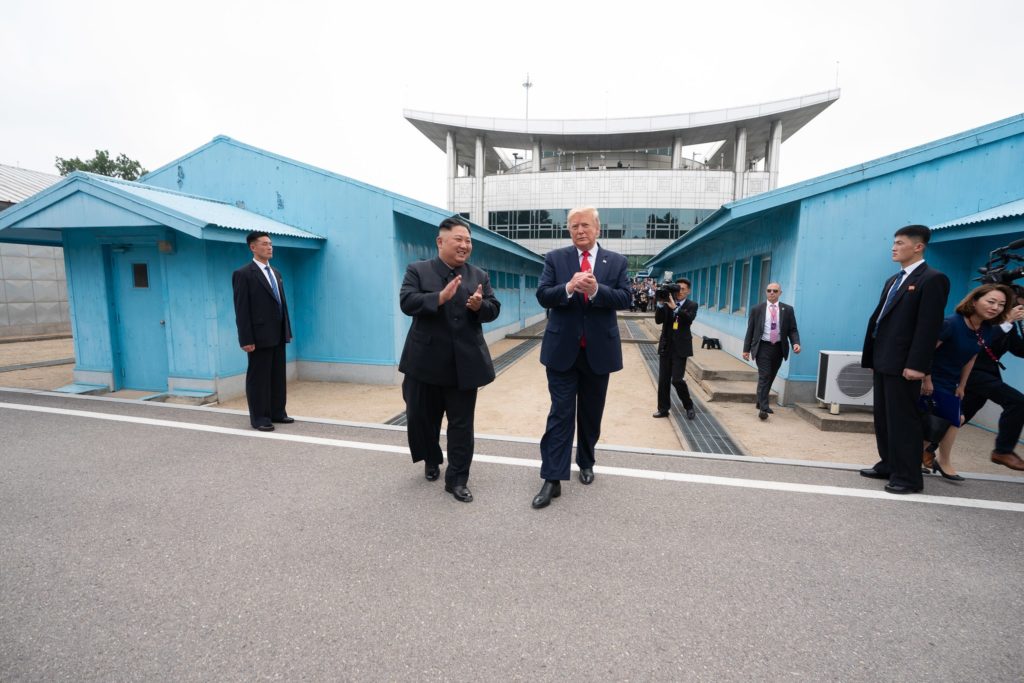The Peninsula
The Trump-Kim DMZ Meeting was a Solution to a Problem

By Mark Tokola
The breakdown of the February Hanoi summit meeting between President Trump and Kim Jong-un left the problem of how and when to restart the negotiation process. One drawback to a ‘top down’ approach is that there is no assurance that the two sides will meet again without a change of circumstances, i.e. without someone making a concession. What would have to happen to make a third Trump-Kim meeting possible?
Following the Hanoi summit, the question has been, would the U.S. or North Korea make the first move to restart talks? It seemed unlikely that the U.S. would relax sanctions just to restart the negotiations. It seemed equally improbable that North Korea would make a unilateral concession regarding its nuclear program: it will want to keep all of those bargaining chips for the real denuclearization negotiations.
The June 30 “spontaneous” meeting between President Trump and Kim Jong-un at the DMZ provided a clean solution to the problem created by the Hanoi breakdown. The President happened to be in the neighborhood. For Kim Jong-un, it’s a short jaunt from Pyongyang down to the DMZ. Why not meet up? It was a way to restart the talks without requiring a concession from either side.
The U.S. President stepping into North Korea may have looked like a gift to North Korea, but for President Trump it was equally a historic opportunity for a U.S. President to go where no President had gone before. Call that a win-win. Whether Xi Jinping orchestrated the DMZ meeting by carrying a message from Kim to Trump at the Osaka G20 or whether Trump and Kim adroitly used Xi Jinping as cover to avoid being seen as making the first step hardly matters. It worked.
The June 30 meeting has been criticized for being substance-free and merely symbolic. The main point, however, is that President Trump and Kim Jong-un have gotten past the Hanoi logjam and have apparently empowered their negotiators to resume talks. Special Envoy Steve Biegun was conspicuously present at the DMZ, a strong signal that he has President Trump’s approval to move ahead. It probably was a plus, not a minus, that the June 30 meeting did not provide specifics. Those might have limited the negotiators’ room for maneuver. They can get down to substance without having to spend time interpreting whatever the June 30 meeting might have produced by way of agreement. And, don’t underestimate symbolism. Symbolism can help progress happen.
This is no guarantee that the U.S. and North Korea will be able to find a middle ground when they do resume talks, but following the vague Singapore summit agreement and the breakdown in Hanoi, at least a negotiating process seems underway. That could make the June 30 DMZ meeting more important in retrospect than it might seem now.
Mark Tokola is the Vice President of the Korea Economic Institute of America. The views expressed here are his own.
Photo from the White House Photostream on flickr Creative Commons.
